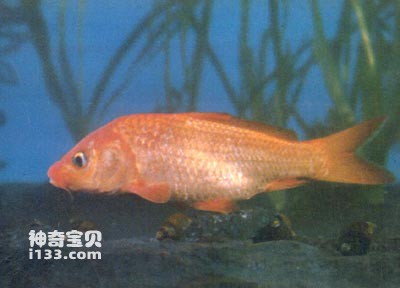Carp (Cyprinus carpio) belongs to the order Cypriniformes, family Cyprinidae, subfamily Cyprinus, and genus Cyprinus. Commonly known as: Liguaizi, Maozi, Lizi, Ruanzi. English name: Carp, Common carp.
The sides of the body are flat and the abdomen is round, and the back of the head is slightly raised. The mouth end is in the shape of a horseshoe. There are 2 pairs of barbels, the mandibular barbels are longer than the snout barbels. The main row of hypopharyngeal teeth is molar-shaped. The base of the dorsal fin is longer, and both the dorsal and anal fins have a thick, serrated spine. The scales are larger, the back of the body is gray-black, the sides are blue-gray with golden yellow, the abdomen is gray-white, and the lower leaves of the anal fin and caudal fin are orange.

Carp usually inhabit the lower layers of water bodies with soft bottom and overgrown aquatic plants. They swim slowly in winter and overwinter in the deep water bottom. Carps are extremely adaptable to water environments and can withstand cold, alkali and hypoxia. The adult carp is an omnivorous fish that mainly feeds on benthic molluscs, while the juvenile stage feeds mainly on large zooplankton. Most fish reach sexual maturity at 1 year old, and the reproductive period varies depending on the growing area. Due to the warm climate in the Pearl River Basin, spawning begins at the end of February or early March; in the Yangtze River and Yellow River Basin, spawning mostly occurs from April to May; in the Northeast, which is relatively cold, spawning does not begin until June. The spawning grounds are mostly located in shallow water areas covered with aquatic plants in river bends or lake branches. Fish eggs adhere to the aquatic plants and develop. After the broodstock reproduces, it enters the fattening period.
When talking about carp, people will think of the Yellow River carp, one of the four famous fish in ancient my country, as well as the famous ornamental fish: red carp, mirror carp, and many cultured species. Carp is one of the freshwater fish species with the most varieties, the widest distribution, the longest breeding history, and the highest yield.
Carp is the earliest cultured fish in the world. According to historical data, pond culture began as early as the Yin and Shang Dynasties in the 12th century BC. According to the Book of Songs, King Wen of Zhou dug a pond to raise carp. During the Spring and Autumn Period and the Warring States Period, Fan Li, an official of the Yue State, strongly advocated the development of carp farming in ponds. He believed: "If you raise carp in ponds for three years, the profit can reach tens of millions, and the country of Yue will be in profit." In ancient China, there was a proverb that "raising fish and planting bamboo is twice as beneficial", which has been passed down to this day. In the Zhou Dynasty, carp had become one of the most valuable foods. King Xuan of Zhou won the battle against Yan Xun, and specially prepared a banquet for the princes with "turtles, carps, and carps". It is said in the Book of Songs that "it is better to eat fish than to eat carp from the river..." According to legend, when Confucius gave birth to a son, Duke Zhao of Lu gave Confucius a carp. Confucius was grateful for the gift from the monarch and named his son Li, with the courtesy name Boyu. Mencius once said: "I want fish, and I want bear's paws, but I cannot have both." Tao Hongjing of the Liang Dynasty believed that carp "is the strength of all fishes and the flavor of food." By the Han Dynasty more than 2,200 years ago, carp farming in ponds had become very popular. Everyone from the royal family to landlords were engaged in carp farming, and it gradually developed from self-sufficiency to commercial production. In the Tang Dynasty, the emperor's surname was Li, and "carp" was the same as "Li". Therefore, the carp jumped onto the dragon gate and became a symbol of the royal family. The letter-writing talisman used in the court was also carved in the shape of a carp. The fish is given to ministers to show their honor. Therefore, "raising carp", "catching carp", "selling carp" and "eating carp" have become the biggest taboos of the royal family, and violators will be severely punished. The law of the Tang Dynasty stipulated that any carp caught must be released immediately, and anyone who sold it would be fined sixty times. During the 300 years of the Tang Dynasty, fish farmers had to find other breeding targets and gradually discovered the most ideal fish for breeding - the "four major fish": green, grass, silver carp and bighead carp. After the Tang Dynasty, carp farming apparently resumed, but due to the slow growth of carp, it could only play a supporting role.
animal tags:
We created this article in conjunction with AI technology, then made sure it was fact-checked and edited by a Animals Top editor.